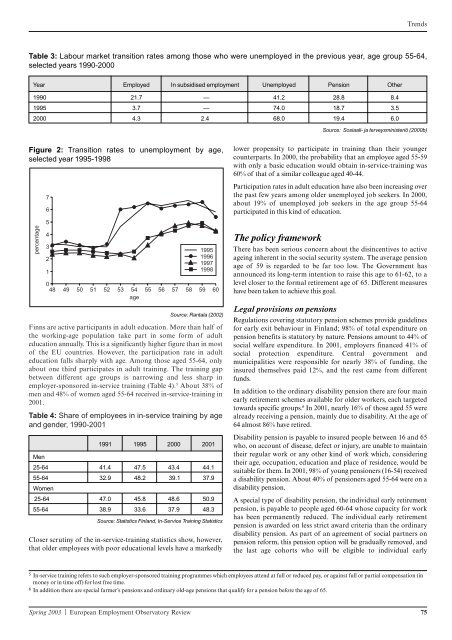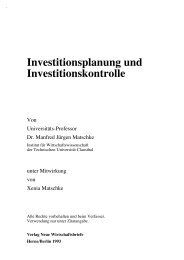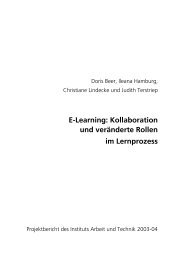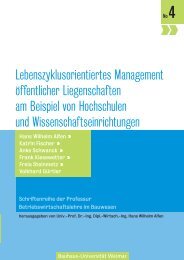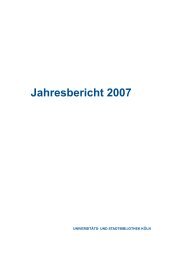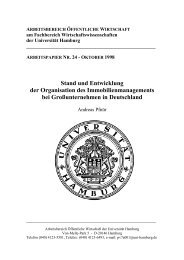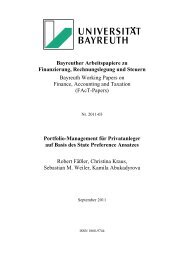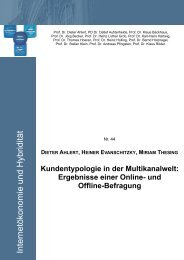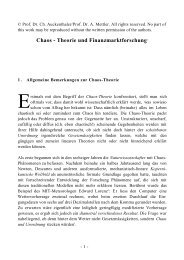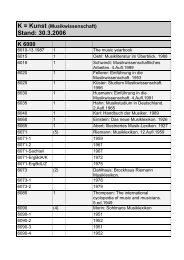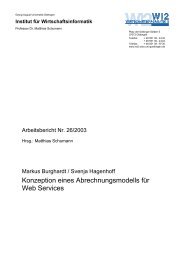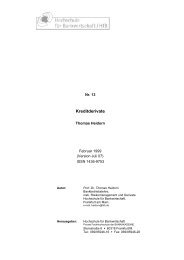FRANCE The
FRANCE The
FRANCE The
Create successful ePaper yourself
Turn your PDF publications into a flip-book with our unique Google optimized e-Paper software.
Table 3: Labour market transition rates among those who were unemployed in the previous year, age group 55-64,<br />
selected years 1990-2000<br />
Year Employed In subsidised employment Unemployed Pension Other<br />
1990 21.7 — 41.2 28.8 8.4<br />
1995 3.7 — 74.0 18.7 3.5<br />
2000 4.3 2.4 68.0 19.4 6.0<br />
Figure 2: Transition rates to unemployment by age,<br />
selected year 1995-1998<br />
percentage<br />
7<br />
6<br />
5<br />
4<br />
3<br />
2<br />
1<br />
1995<br />
1996<br />
1997<br />
1998<br />
0<br />
48 49 50 51 52 53 54<br />
age<br />
55 56 57 58 59 60<br />
Source: Rantala (2002)<br />
Finns are active participants in adult education. More than half of<br />
the working-age population take part in some form of adult<br />
education annually. This is a significantly higher figure than in most<br />
of the EU countries. However, the participation rate in adult<br />
education falls sharply with age. Among those aged 55-64, only<br />
about one third participates in adult training. <strong>The</strong> training gap<br />
between different age groups is narrowing and less sharp in<br />
employer-sponsored in-service training (Table 4). 5 About 38% of<br />
men and 48% of women aged 55-64 received in-service-training in<br />
2001.<br />
Table 4: Share of employees in in-service training by age<br />
and gender, 1990-2001<br />
1991 1995 2000 2001<br />
Men<br />
25-64 41.4 47.5 43.4 44.1<br />
55-64<br />
Women<br />
32.9 48.2 39.1 37.9<br />
25-64 47.0 45.8 48.6 50.9<br />
55-64 38.9 33.6 37.9 48.3<br />
Source: Statistics Finland, In-Service Training Statistics<br />
Closer scrutiny of the in-service-training statistics show, however,<br />
that older employees with poor educational levels have a markedly<br />
Spring 2003 | European Employment Observatory Review 75<br />
Trends<br />
Source: Sosiaali- ja terveysministeriö (2000b)<br />
lower propensity to participate in training than their younger<br />
counterparts. In 2000, the probability that an employee aged 55-59<br />
with only a basic education would obtain in-service-training was<br />
60% of that of a similar colleague aged 40-44.<br />
Participation rates in adult education have also been increasing over<br />
the past few years among older unemployed job seekers. In 2000,<br />
about 19% of unemployed job seekers in the age group 55-64<br />
participated in this kind of education.<br />
<strong>The</strong> policy framework<br />
<strong>The</strong>re has been serious concern about the disincentives to active<br />
ageing inherent in the social security system. <strong>The</strong> average pension<br />
age of 59 is regarded to be far too low. <strong>The</strong> Government has<br />
announced its long-term intention to raise this age to 61-62, to a<br />
level closer to the formal retirement age of 65. Different measures<br />
have been taken to achieve this goal.<br />
Legal provisions on pensions<br />
Regulations covering statutory pension schemes provide guidelines<br />
for early exit behaviour in Finland; 98% of total expenditure on<br />
pension benefits is statutory by nature. Pensions amount to 44% of<br />
social welfare expenditure. In 2001, employers financed 41% of<br />
social protection expenditure. Central government and<br />
municipalities were responsible for nearly 38% of funding, the<br />
insured themselves paid 12%, and the rest came from different<br />
funds.<br />
In addition to the ordinary disability pension there are four main<br />
early retirement schemes available for older workers, each targeted<br />
towards specific groups. 6 In 2001, nearly 16% of those aged 55 were<br />
already receiving a pension, mainly due to disability. At the age of<br />
64 almost 86% have retired.<br />
Disability pension is payable to insured people between 16 and 65<br />
who, on account of disease, defect or injury, are unable to maintain<br />
their regular work or any other kind of work which, considering<br />
their age, occupation, education and place of residence, would be<br />
suitable for them. In 2001, 98% of young pensioners (16-54) received<br />
a disability pension. About 40% of pensioners aged 55-64 were on a<br />
disability pension.<br />
A special type of disability pension, the individual early retirement<br />
pension, is payable to people aged 60-64 whose capacity for work<br />
has been permanently reduced. <strong>The</strong> individual early retirement<br />
pension is awarded on less strict award criteria than the ordinary<br />
disability pension. As part of an agreement of social partners on<br />
pension reform, this pension option will be gradually removed, and<br />
the last age cohorts who will be eligible to individual early<br />
5 In-service training refers to such employer-sponsored training programmes which employees attend at full or reduced pay, or against full or partial compensation (in<br />
money or in time off) for lost free time.<br />
6 In addition there are special farmer’s pensions and ordinary old-age pensions that qualify for a pension before the age of 65.


